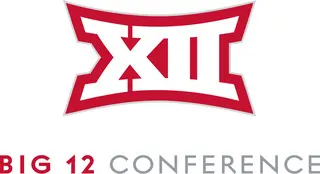There are 10 colleges and universities in West Coast Conference (WCC). The West Coast Conference (WCC) is a collegiate athletic conference affiliated in NCAA Division I consisting of ten member schools across the states of California, Oregon, Utah and Washington.
All of the current members are private, faith-based institutions. Seven members are Catholic Church affiliates, with four of these schools being Jesuit institutions. Pepperdine is an affiliate of the Churches of Christ. Brigham Young University is an affiliate of The Church of Jesus Christ of Latter-day Saints (LDS). The conference's newest member, the University of the Pacific (which joined in 2013), is affiliated with the United Methodist Church, although it has not been financially supported by the church since 1969.
General Academic Factors Comparison Between Members in West Coast Conference (WCC)
All members of West Coast Conference (WCC) are private schools.The average acceptance ratio of the schools is 59.60% where Pepperdine University has the tightest acceptance ratio of 36% and Saint Mary's College of California has the highest ratio of 77%. Total 102,329 students are enrolled into colleges in West Coast Conference (WCC) where Brigham Young University-Provo has the largest population with 34,334 students and Saint Mary's College of California is the smallest with 3,913 students. The average graduation rate is 81.10% and the average students to faculty ratio is 12.60:1 at colleges in West Coast Conference (WCC).
Next table shows the academic information and key facts of the West Coast Conference (WCC) including acceptance ratio, graduation rates, student population, and students to faculty ratio.| Name | Acceptance Rates | Graduation Rates | Population | Student-Faculty Ratio |
|---|---|---|---|---|
| Brigham Young University-Provo Provo, UT | 64% | 83% | 34,334 | 20:1 (5.00 %) |
| Gonzaga University Spokane, WA | 66% | 87% | 7,506 | 12:1 (8.33 %) |
| Loyola Marymount University Los Angeles, CA | 47% | 79% | 9,618 | 10:1 (10.00 %) |
| University of the Pacific Stockton, CA | 63% | 70% | 6,255 | 13:1 (7.69 %) |
| Pepperdine University Malibu, CA | 36% | 85% | 7,710 | 10:1 (10.00 %) |
| University of Portland Portland, OR | 75% | 82% | 4,396 | 12:1 (8.33 %) |
| Saint Mary's College of California Moraga, CA | 77% | 76% | 3,913 | 11:1 (9.09 %) |
| University of San Diego San Diego, CA | 53% | 82% | 8,905 | 14:1 (7.14 %) |
| University of San Francisco San Francisco, CA | 65% | 77% | 11,063 | 13:1 (7.69 %) |
| Santa Clara University Santa Clara, CA | 50% | 90% | 8,629 | 11:1 (9.09 %) |
| Average | 59.60% | 81.10% | 102,329 (Total) | 12.60:1 (7.94 %) |
West Coast Conference (WCC) 2019 Tuition & Fees Comparison and 2020 Estimated Costs
Next table lists 2018-2019 tuition & fees and compares the costs between West Coast Conference (WCC). The 2018-2019 costs are officially published by IPEDS, U.S. Department of Education. The estimated costs for year 2019-2020 are calculated and estimated based on each school's tuition rates last year.
For the undergraduate programs, the average tuition & fees of West Coast Conference (WCC) is $44,177 where Pepperdine University has the most expensive costs with $53,932 and Brigham Young University-Provo has the lowest amount of tuition with $5,620. The average graduate tuition & fees of West Coast Conference (WCC) is $26,199 where University of the Pacific has the highest tuition with $47,952 and Brigham Young University-Provo has the lowest amount of graduate school tuition with $6,880.
| School Name | 2019 Tuition & Fees | 2020 Estimated Tuition & Fees |
|---|---|---|
| Brigham Young University-Provo | $5,620 | $5,784 |
| Gonzaga University | $43,210 | $45,175 |
| Loyola Marymount University | $48,522 | $51,031 |
| University of the Pacific | $48,164 | $50,053 |
| Pepperdine University | $53,932 | $55,944 |
| University of Portland | $45,904 | $47,862 |
| Saint Mary's College of California | $47,280 | $48,929 |
| University of San Diego | $49,358 | $51,065 |
| University of San Francisco | $48,066 | $49,953 |
| Santa Clara University | $51,711 | $53,632 |
| Average | $44,177 | $45,943 |
| School Name | 2019 Tuition & Fees | 2020 Estimated Tuition & Fees |
|---|---|---|
| Brigham Young University-Provo | $6,880 | $6,880 |
| Gonzaga University | $17,045 | $17,247 |
| Loyola Marymount University | $18,106 | $18,897 |
| University of the Pacific | $47,952 | $49,763 |
| Pepperdine University | $33,820 | $35,064 |
| University of Portland | $22,914 | $28,681 |
| Saint Mary's College of California | $39,077 | $40,444 |
| University of San Diego | $27,066 | $27,729 |
| University of San Francisco | $24,990 | $25,741 |
| Santa Clara University | $24,144 | $20,215 |
| Average | $26,199 | $27,067 |





